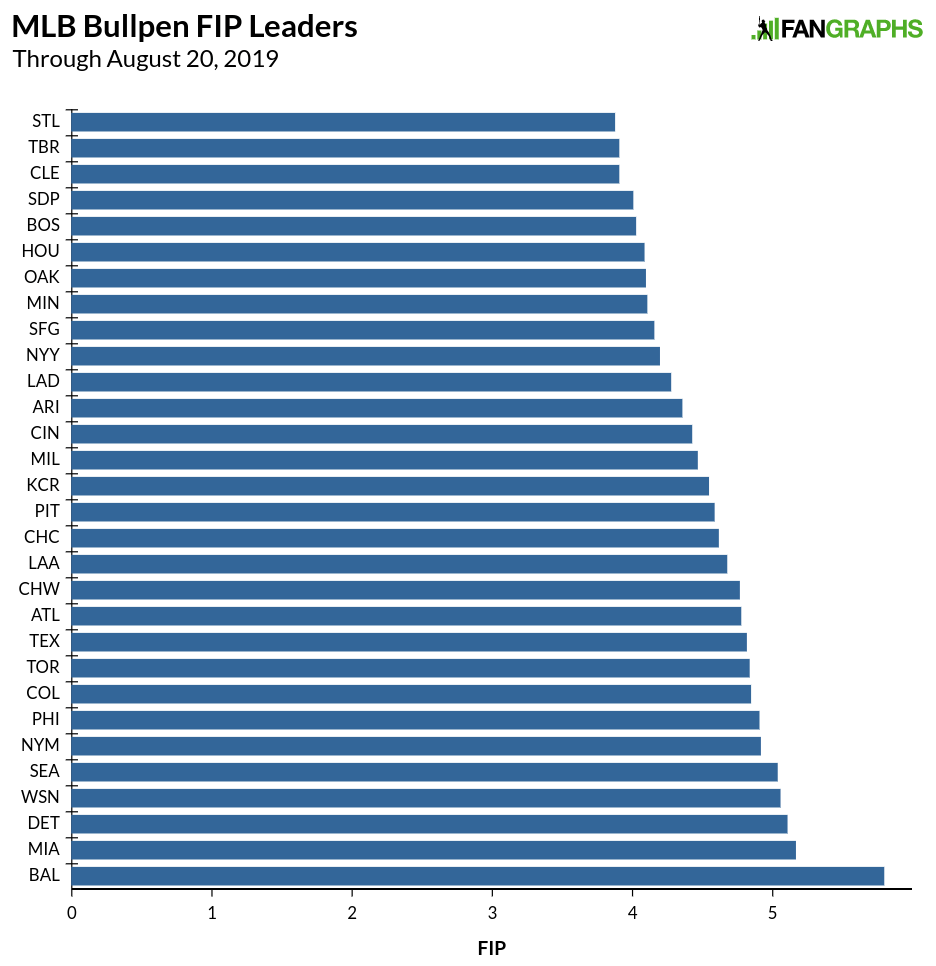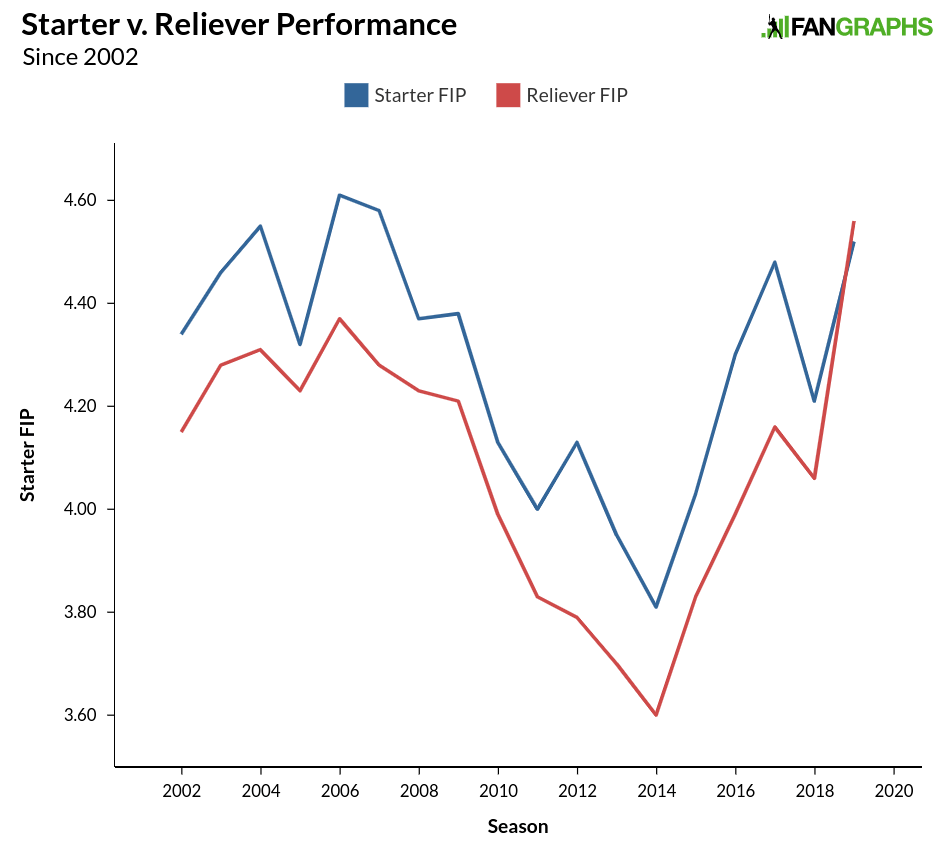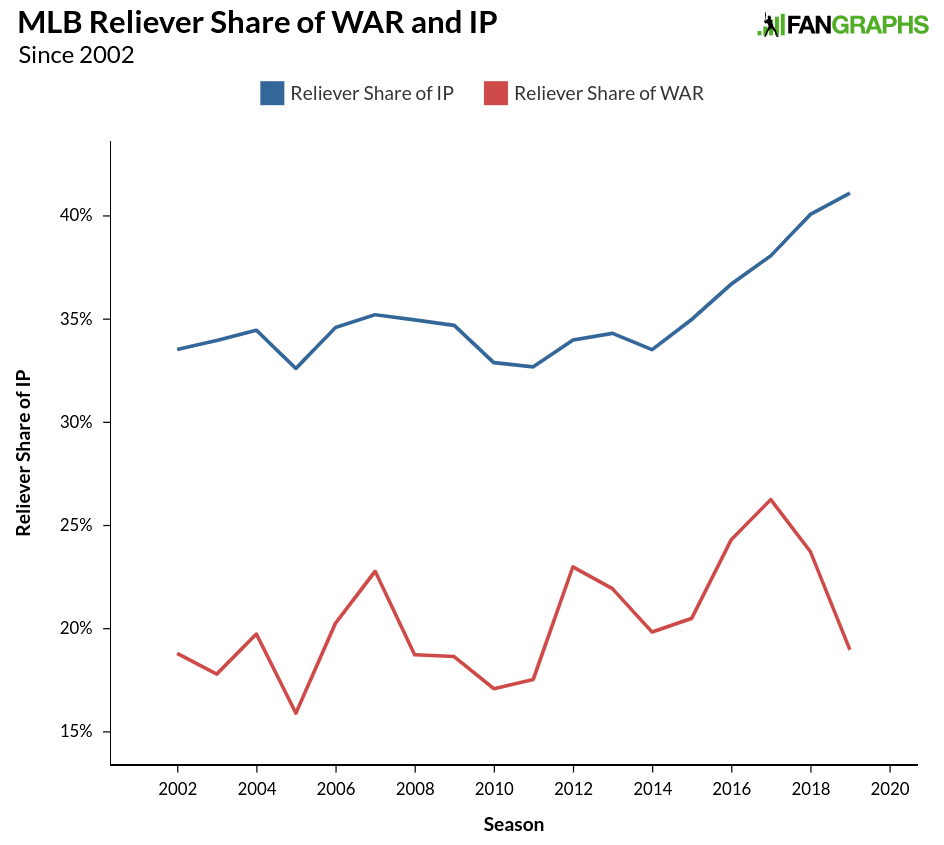The Best Bullpens in Baseball
After finishing up some research noting the wide gap between the quality of relief innings depending on the importance of the situation this season, it felt necessary to take a similar look at team performance. If teams were deploying less-good relievers in low leverage situations and good ones in high leverage situations, it could distort our sense of the quality of a bullpen when looking at overall numbers.
We’ll start with a pretty generic view of bullpens this year, with FIP by team:

The Cardinals have the lowest FIP of any bullpen this season, as the group as a whole has pitched very well. The Rays coming in second and first in the American League is somewhat of a surprise given their use of an opener in half their games; they are losing about 60 good relief innings and replacing them with around 180 good-but-not-as-good starting pitching-type innings. The teams fall down in a nice cascade the rest of the way, with the Baltimore Orioles providing a a very heavy base at the bottom of baseball.
But not all innings are created equal, and some of the innings pitched by bullpens are more important than others. If we separate meaningful innings (medium leverage and high leverage) from less important innings (low leverage), we can get a sense of how good a team’s bullpen is when it matters. This also could provide a better sense of which teams might be better prepared for the playoffs, given the consolidation of relief innings in October:





